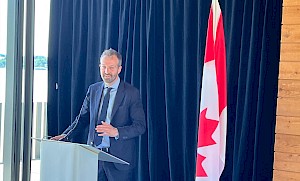The yellow perch population in Saint-Pierre Lake and its archipelago has been declining for many years. Several factors have worked against yellow perch, such as access to good spawning habitats along the shoreline of Saint-Pierre Lake.
Approximately 5,000 ha of farmland around the lake is located under the 0 to 2 year flood level, i.e. in the lake’s nearshore areas. The farmland in Saint-Ignace-de-Loyola used for this compensation project is no exception, as it is mainly under the 0 to 2 years flood level. This land was used to farm a soy monoculture, a type of crop that does not provide adequate spawning beds for fish in the spring. Maintaining vegetation along the edges of the fields limits the habitat potential for aquatic, avian and land animals during both flood periods and ebb periods.


